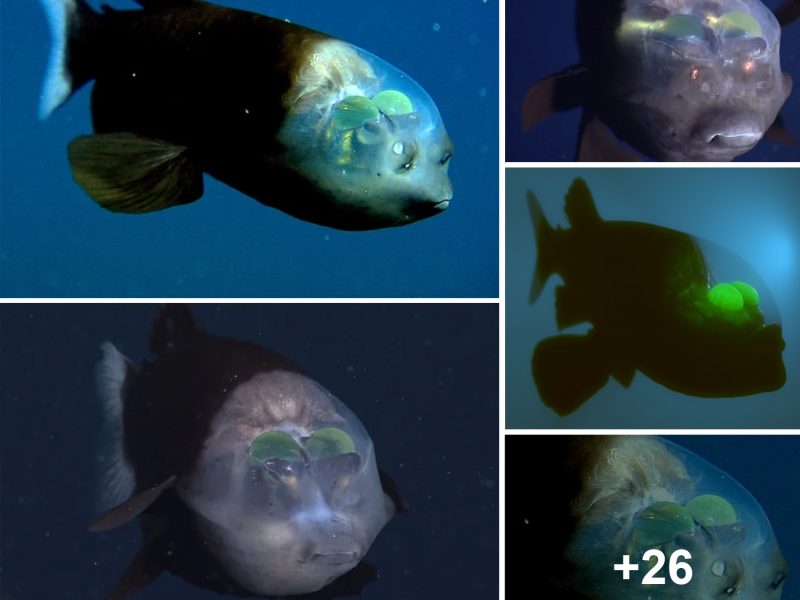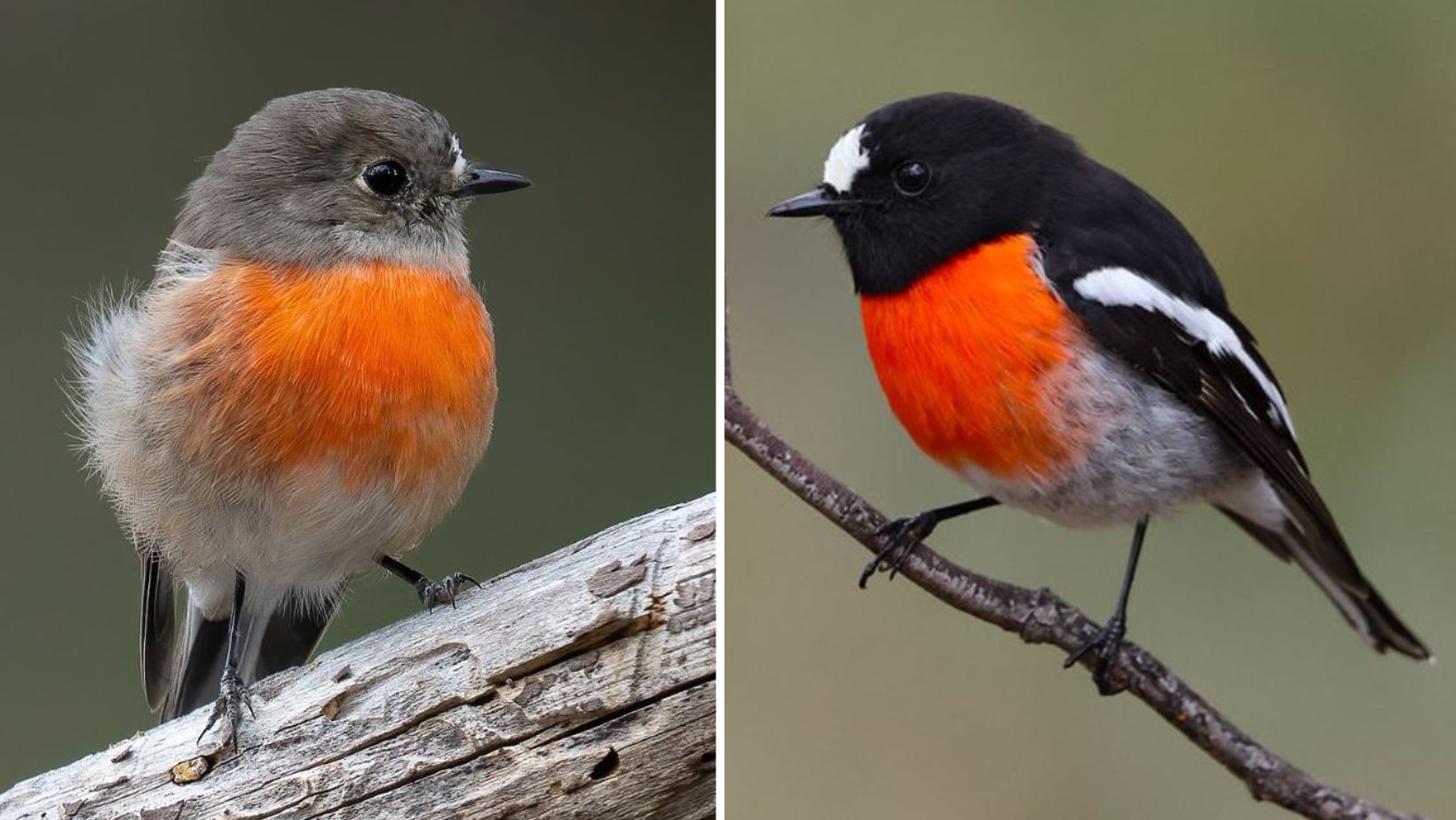
A beautiful scarlet blush on the chest, this delightful offset by our deftly placed patch of white on the nose.
Meet the Scarlet Robin
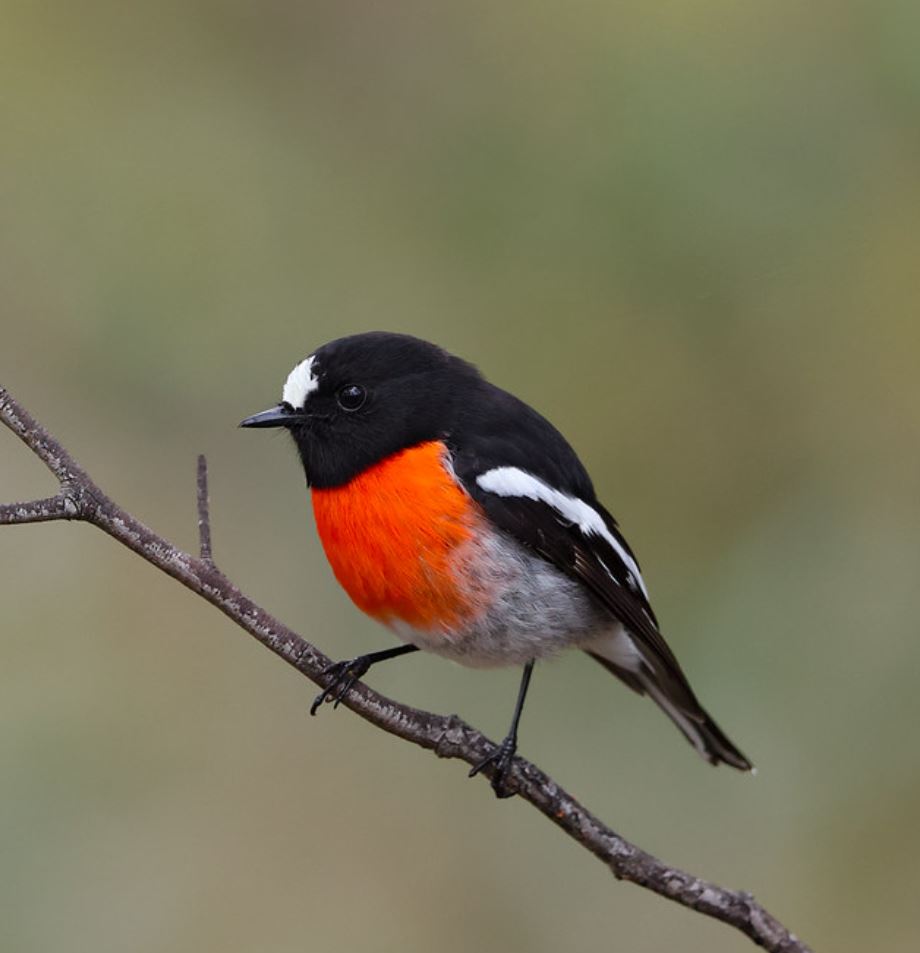 “Scarlet Robin male (Petroica boodang)” (cropped) by patrickkavanagh is licensed under CC BY 2.0.
“Scarlet Robin male (Petroica boodang)” (cropped) by patrickkavanagh is licensed under CC BY 2.0.
The Scarlet Robin (Petroica boodang) is a medium-sized robin, with a plump and compact appearance. Males have a black head, neck and upperparts with a conspicuous white patch above the bill (frontal patch). The breast is scarlet red and the lower underparts are white. The wings are barred white and the outer tail is also white.
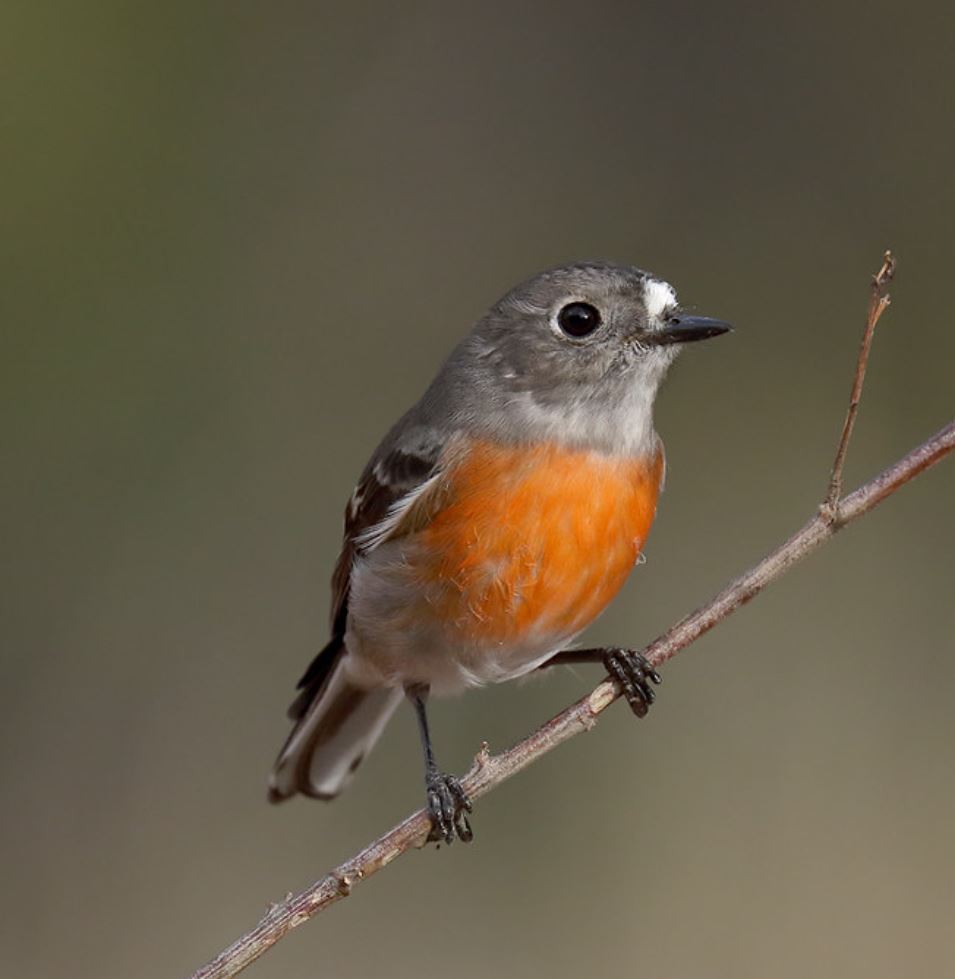 “Scarlet Robin (Petroica boodang)” (cropped) by patrickkavanagh is licensed under CC BY 2.0.
“Scarlet Robin (Petroica boodang)” (cropped) by patrickkavanagh is licensed under CC BY 2.0.
Females differ markedly from males, being brown above with a whitish frontal patch and an orange-red breast, brown wings and white underparts.
Young birds resemble females but are streaked white above, tinged buff on the wings and are mottled dark-brown on the breast and sides of the body. The Norfolk Island subspecies of the Scarlet Robin differs from mainland birds, with the males having less white in the wings and tail and a larger red breast-patch while the females tend to be browner and also have less white in the wings and tail.
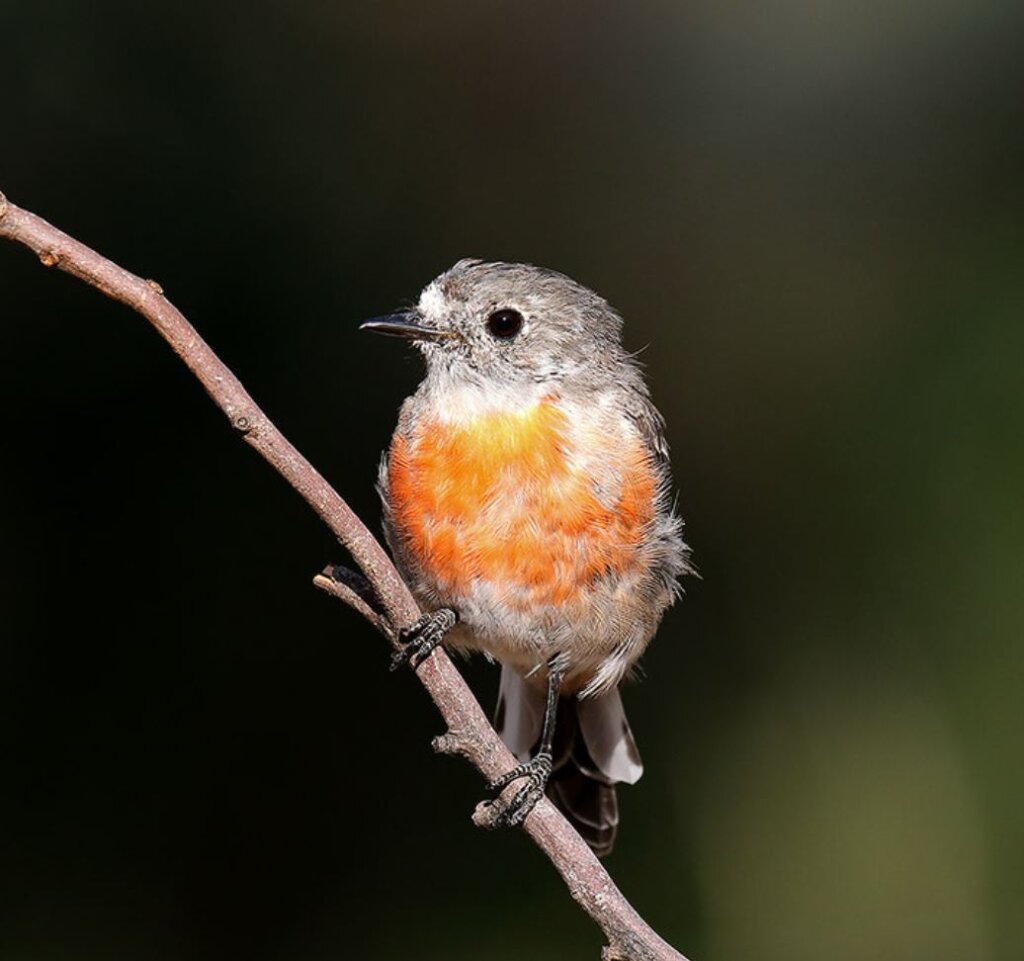 “Scarlet Robin (Petroica boodang) female” by patrickkavanagh is licensed under CC BY 2.0.
“Scarlet Robin (Petroica boodang) female” by patrickkavanagh is licensed under CC BY 2.0.
The Scarlet Robin is found in south-eastern and south-western Australia, as well as on Norfolk Island. In Australia, it is found south of latitude 25°S, from south-eastern Queensland along the coast of New South Wales (and inland to western slopes of Great Dividing Range) to Victoria and Tasmania, and west to Eyre Peninsula, South Australia; it is also found in south-west Western Australia. It is also widely distributed in the south-western Pacific from Bougainville and the Solomon Islands to Vanuatu, Fiji and Western Samoa.
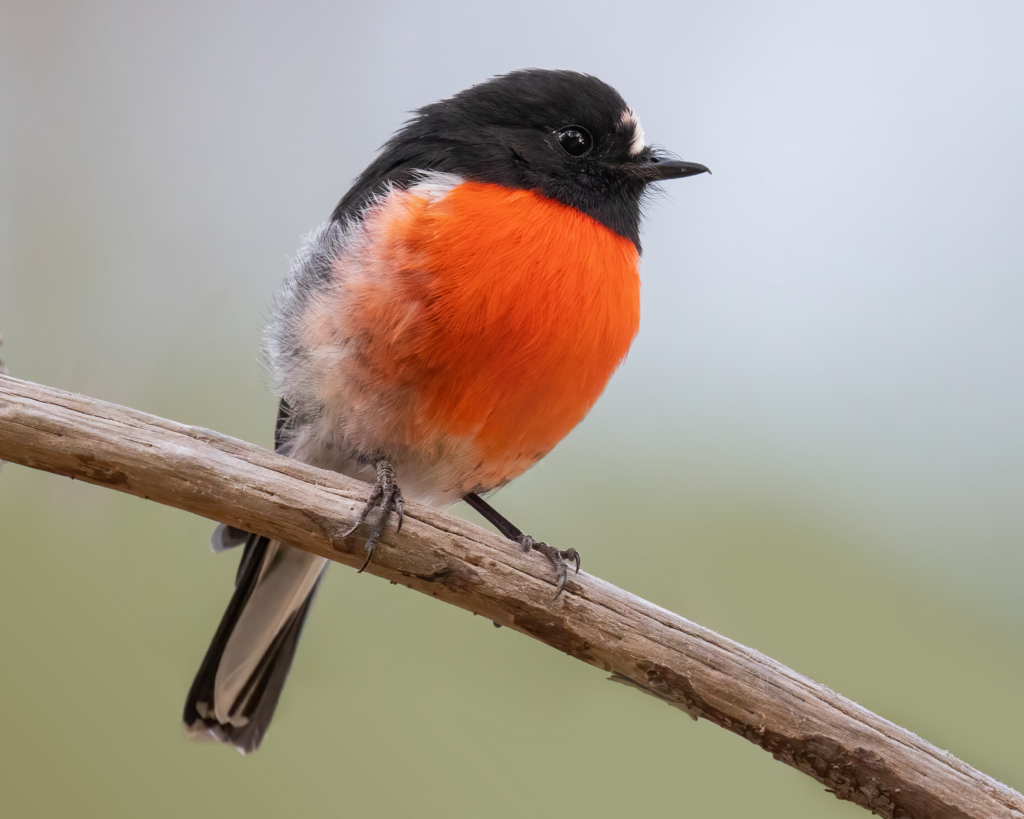 “Scarlet Robin- Mortimer Bay” by JJ Harrison is licensed under CC BY-SA 3.0.
“Scarlet Robin- Mortimer Bay” by JJ Harrison is licensed under CC BY-SA 3.0.
The Scarlet Robin lives in open forests and woodlands in Australia, while it prefers rainforest habitats on Norfolk Island. During winter, it will visit more open habitats such as grasslands and will be seen in farmland and urban parks and gardens at this time.
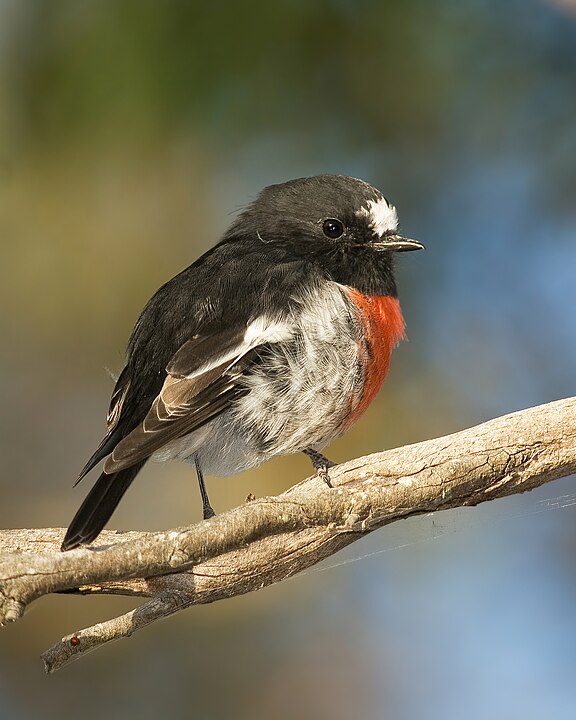 Photo courtesy of JJ Harrison (https://www.jjharrison.com.au/)/CC BY-SA 3.0
Photo courtesy of JJ Harrison (https://www.jjharrison.com.au/)/CC BY-SA 3.0
The Scarlet Robin feeds mainly on insects and forages on or near the ground. It will sit on a perch and fly down to catch prey. Sometimes forages in mixed flocks with other small insect-eating birds, such as Flame and Hooded Robins, Weebills, Grey Fantails and thornbills.
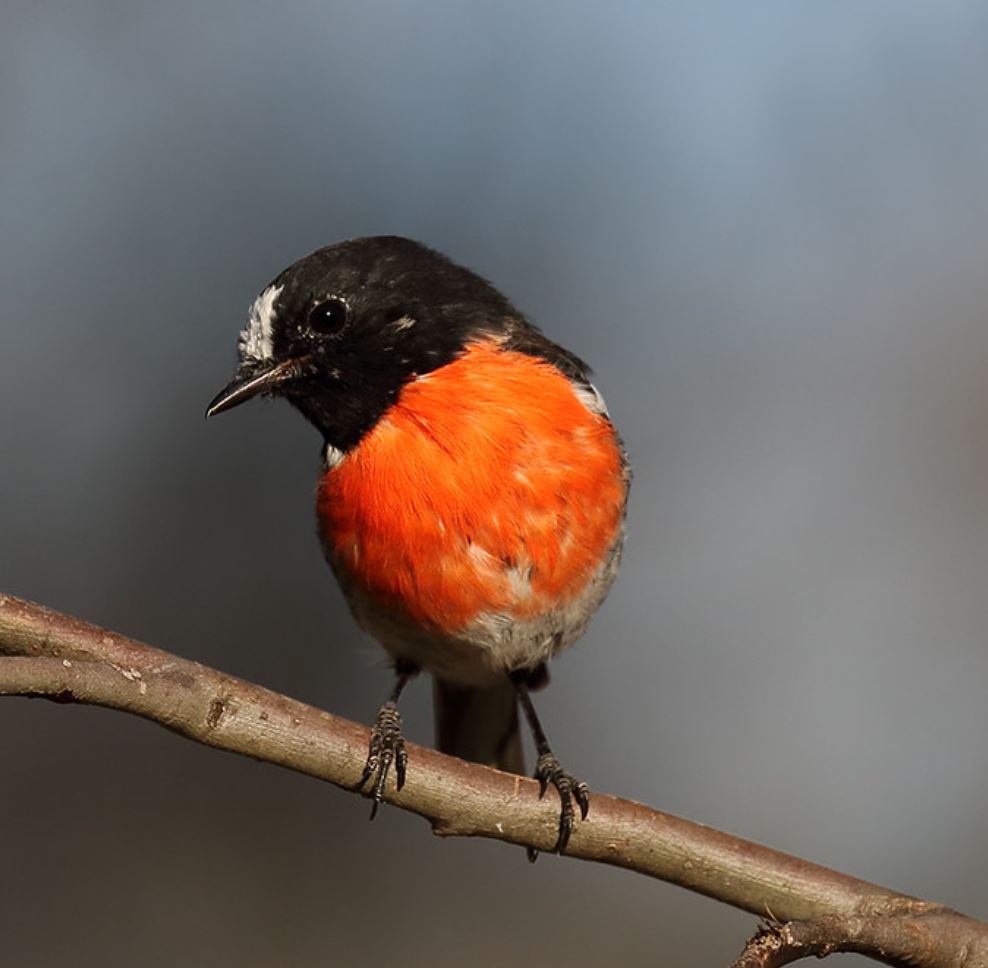 “Scarlet Robin (Petroica boodang) male” (cropped) by patrickkavanagh is licensed under CC BY 2.0.
“Scarlet Robin (Petroica boodang) male” (cropped) by patrickkavanagh is licensed under CC BY 2.0.
Scarlet Robins form permanent monogamous pairs that maintain territories year round. The male advertises and defends the territory by singing from high, prominent perches. During the breeding season, the female selects a suitable, well-hidden nest site in a tree fork and builds a compact open cup nest (individuals of this species have also been reported making a nest on part of a building, such as a gutter). Nest materials include bark, grass, twigs and other plant materials; the nest is bound with spider web, lined with animal fibres or plant-down and camoflaged with moss or lichen. The female incubates the eggs while the male feeds her. Both sexes feed the nestlings, and will continue to feed the young for some time once fledged
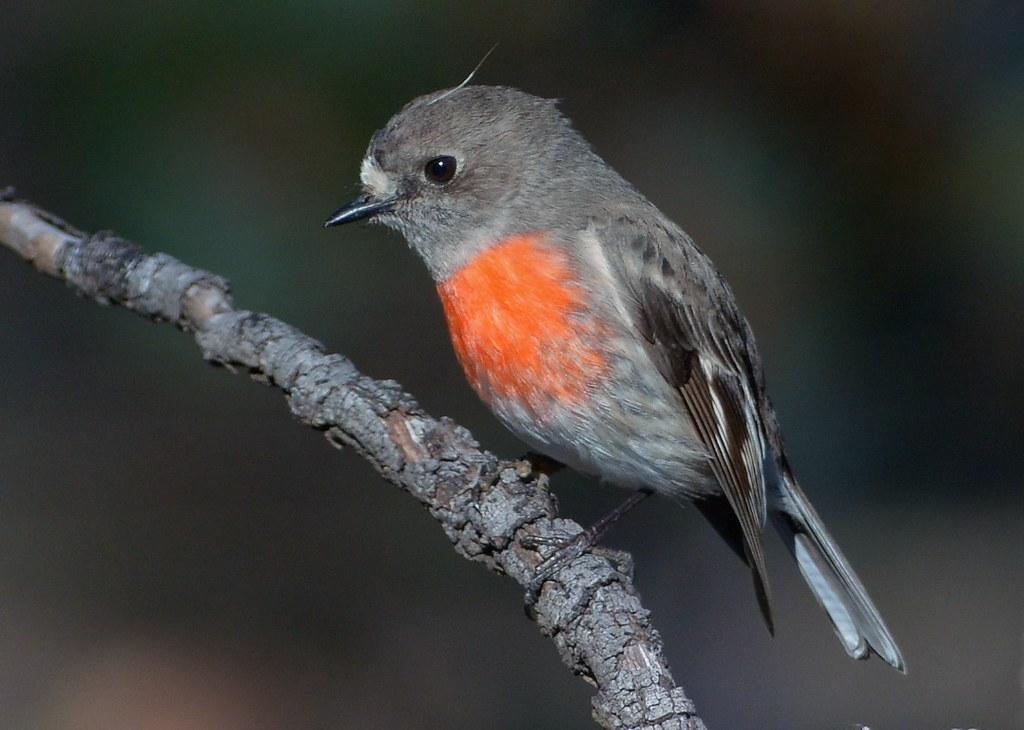 “Scarlet Robin, female” by wag_tales is licensed under CC BY 2.0.
“Scarlet Robin, female” by wag_tales is licensed under CC BY 2.0.
The Scarlet Robin may be confused with other ‘red’ robins such as the Flame (P. phoenicea) and the Red-capped (P. goodenovii). It can be distinguished from these species by the large white patch above the bill in both the male and female (this patch is absent in the Red-capped Robin and smaller in the male Flame Robin). Female Scarlet Robins also tend to have a much redder chest than females of other robin species.Where does it live?
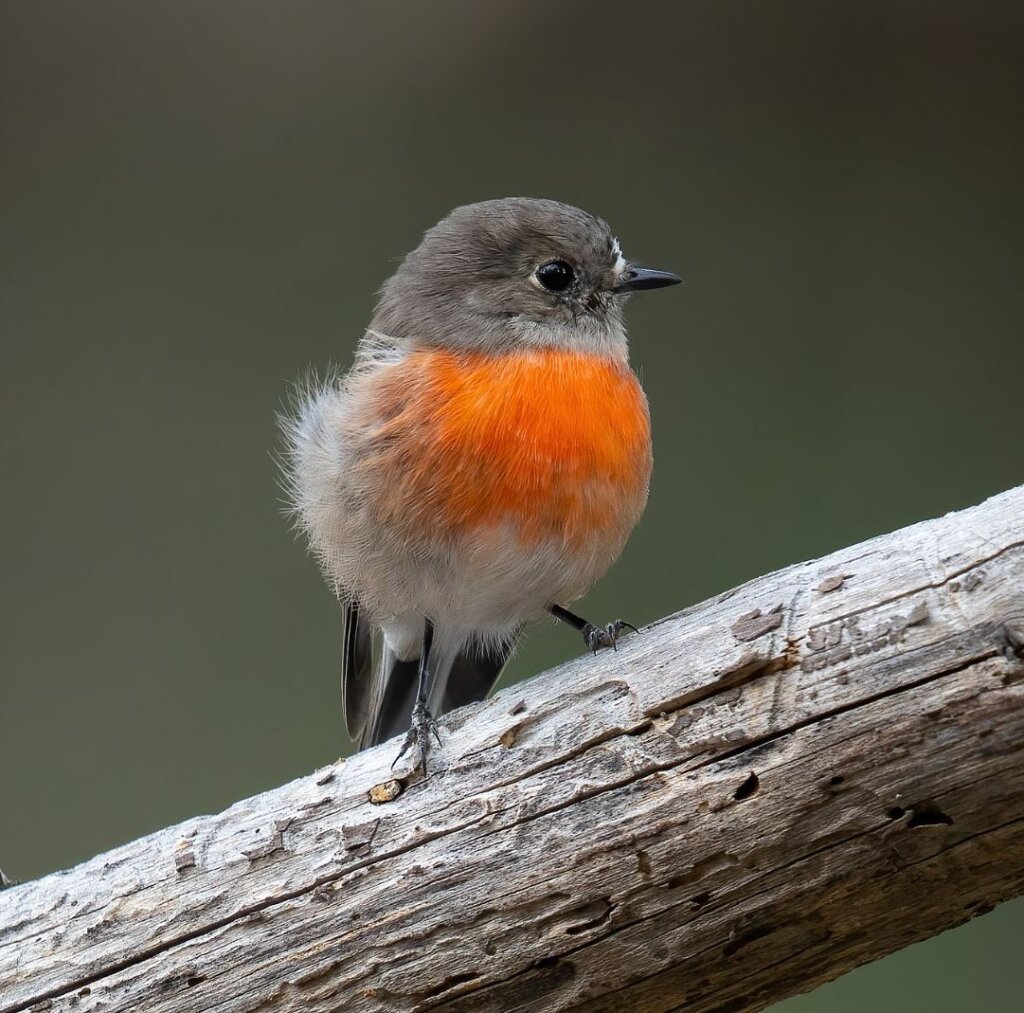 Photo courtesy of (cropped) JJ Harrison/CC BY-SA 3.0
Photo courtesy of (cropped) JJ Harrison/CC BY-SA 3.0
Scarlet Robins can be quite tame around human habitation. Their habit of foraging on the ground for food makes them vulnerable to cats, and young birds that roost close to the ground may be taken by rats.
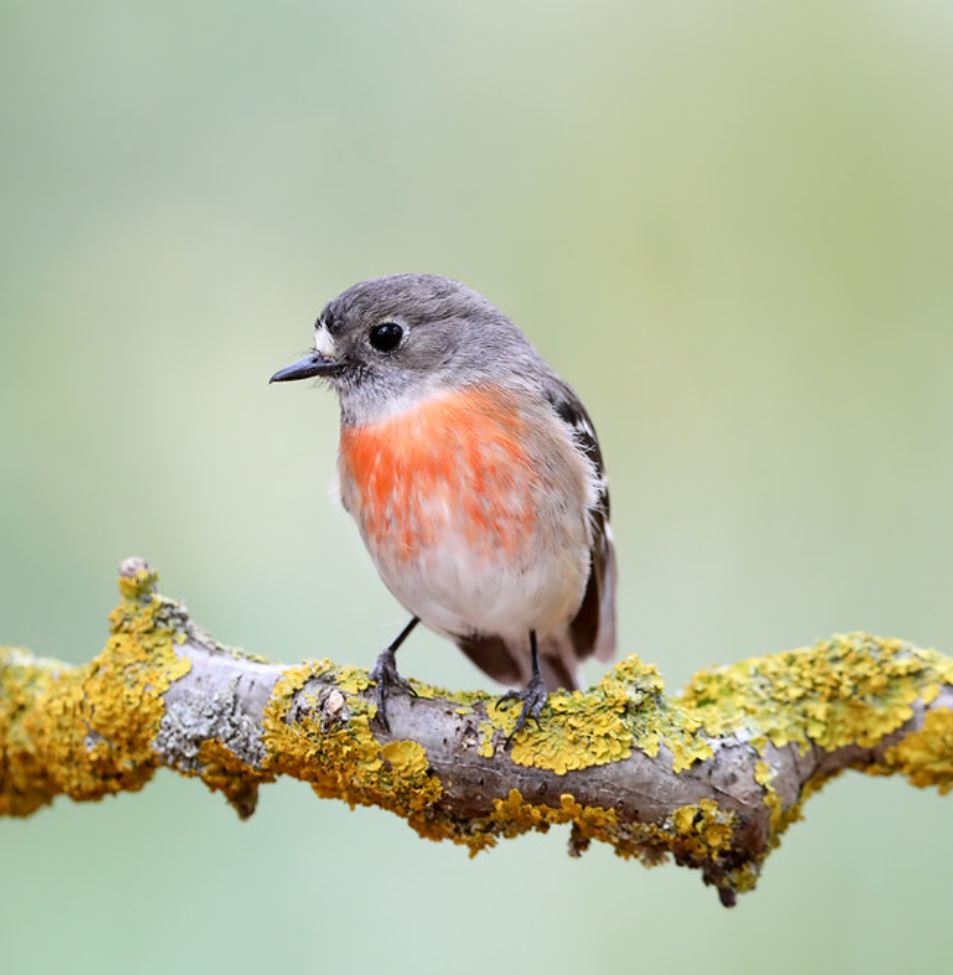 “Scarlet Robin (Petroica boodang)” (cropped) by patrickkavanagh is licensed under CC BY 2.0.
“Scarlet Robin (Petroica boodang)” (cropped) by patrickkavanagh is licensed under CC BY 2.0.
Scarlet Robin populations have declined in South Australia and Western Australia as a result of land-clearing practices. They are particularly affected by the removal of understorey. On Norfolk Island, the subspecies multicolor has declined for the same reasons and is considered vulnerable.
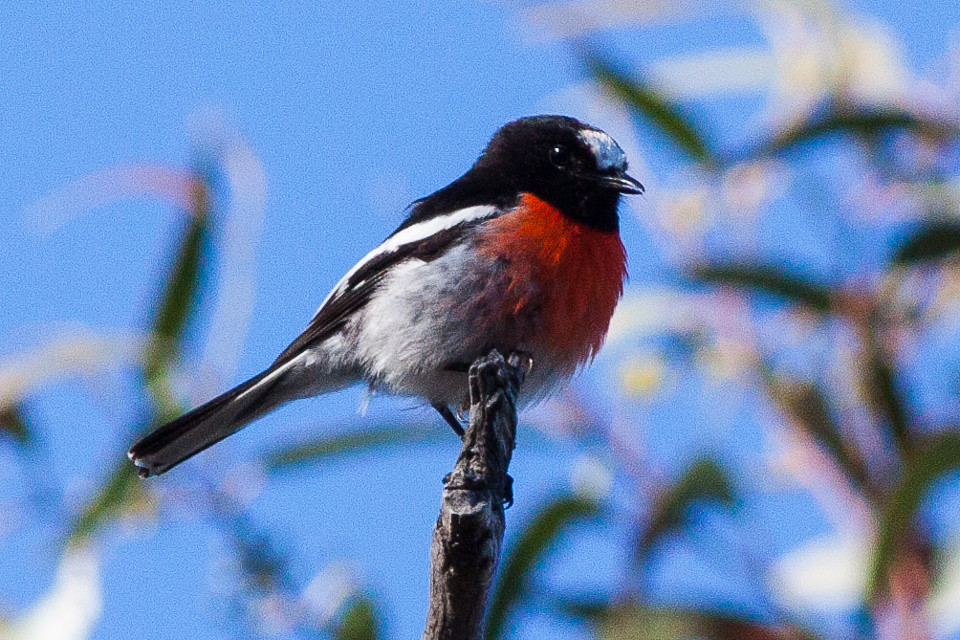 “Scarlet Robin (Petroica boodang)” by sussexbirder is licensed under CC BY 2.0.
“Scarlet Robin (Petroica boodang)” by sussexbirder is licensed under CC BY 2.0.
Listen to this bird right here:
This article uses material from Wikipedia.org which is licensed under the GNU Free Documentation License via Copyright Wikipedia. Images on this page are the sole property of the photographers (unless marked as Public Domain). Please read the license and or contact the photographers directly before using them for any purpose. Thank you all.
A Large Pale-eyed Song Bird Lavishly Decked Out In A Highly Impactful Suit Of Blood Red!
Please SHARE this article with all your bird-loving friends and family.

